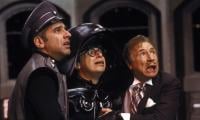Senior managers in professionally run organizations often talk about company culture and compare it with that of similar enterprises. Those who have not heard about this term understand it to be a company’s working environment. However, besides the latter, company policies and employee behaviour can all contribute towards company culture.
Company culture can be defined as a set of shared values, goals, attitudes, and practices that characterize an organization. It is the shared characteristic that makes up an organization’s workforce. It is the way people feel about the work they do, the values they believe in, where they see the company going, and what they are doing to get there. Collectively, these traits represent the personality or culture of an organization. The characteristics of a company emerge largely from how employees interact and how they respond to change. A company’s culture influences results from top to bottom.
The environment in which employees spend most of the time will largely dictate the quality of their professional life. If they work for a company with a strong culture that aligns with their beliefs and attitudes, they will be more likely to work hard and remain with the company for a long period. If the company’s culture does not reflect their personal feelings, they are much more likely to leave or remain with the company but underperform, which is a worst-case scenario.
How organizations go about developing its culture is totally up to them. Over the last 50 plus years, I have worked in several organizations: a state enterprise, an American and a British multinational company, a sole proprietorship (commonly known as a seth company), and a well-known privately run hospital. Apart from the state enterprise, the rest of the companies had their distinct cultures, which evolved over long periods.
In 1972, I joined a state enterprise called the Lahore Engineering and Foundry Ltd. (LEFO), which was the name given to Ittefaq Foundry and Works Limited in Kot Lakhpat, Lahore after its nationalization by the late Zulfikar Ali Bhutto. Soon, the dormant collective bargaining agent (CBA) union became extremely active and started interfering in the management of every department.
The CBA was encouraged with full support provided by the government’s representative appointed to oversee the company’s functioning. The disruptions caused due to infighting of workers and incompetence combined with corruption of management led to the decline of both output and profitability, and the company soon became a liability to the government.
Thereafter, I joined a privately run fertilizer plant in Daharki, Sindh in 1977. The company had introduced a strong work culture brought in from the US. It would assign top priority to maintaining congenial employee relations and would not undertake any job without ensuring the employees’ safety.
The company would treat both its technical and non-technical employees equally, calling them as technical and professional respectively. They would be given equivalent salary and perquisites for the same level of jobs. This practice established a culture of equity and fairness within the organization. The annual increases in employee salaries would be based on a transparent system of performance evaluation. These would be discussed with the employees by their respective supervisors from time to time during the year.
The company had zero tolerance for corruption and bribe offers for getting anything done from government departments. Realizing that this culture prevailed in the company, government officials would not ask for any favours. All these factors would contribute towards consistently high returns even beyond the expectation of shareholders.
The ‘seth’ company located in Sheikhupura, near Lahore, where I worked for a few months, would manufacture electric insulators of all sizes. They were the sole supplier to Wapda. The company had cleverly devised a system of salary disbursement to boost productivity. Half of the salary was fixed, and the remaining would be paid based on an individual’s output.
In most cases, the half of the fixed salary and the incentivized remaining half would constitute more than the full salary. Every worker would strive throughout the month to get more incentive, which had become the company culture.
From 1983 to 2005, I worked at a chemical company, which was a conservative British company till around the mid-1990s; it earned reasonably high profits since the inception. To remain competitive and attract the best people available in the job market, it increased its compensation packages considerably for both management and non-management employees. This change from hierarchy culture to market culture provided a great hike to the company’s image.
The hospital where I am presently employed is an equal opportunity employer in real terms. The female population is around 40 per cent of the total workforce, and women prefer to work here due to its safe and secure work environment.
The top leadership in a company plays a dominant role in developing organizational culture. If they are generally adored by employees at the bottom, it will establish a healthy culture leading to a positive impact on employees’ behaviour and performance.
The writer is a consultant inhuman resources at the Aga Khan
University Hospital. He can be reached at: parvez.rahim1947@gmail.com















